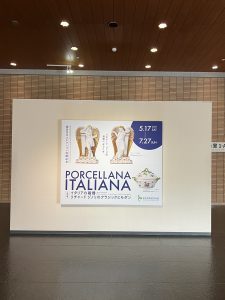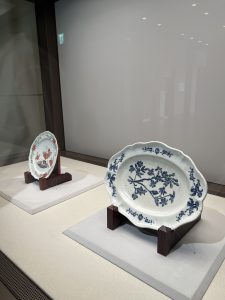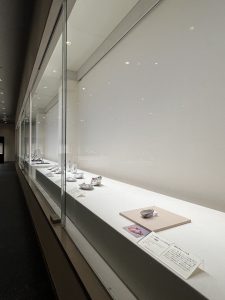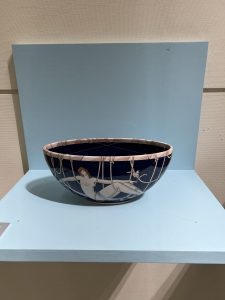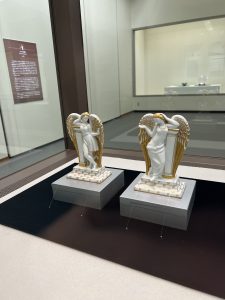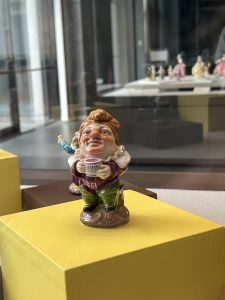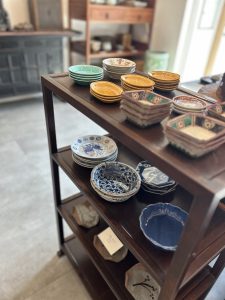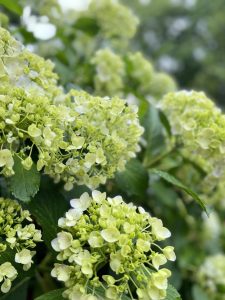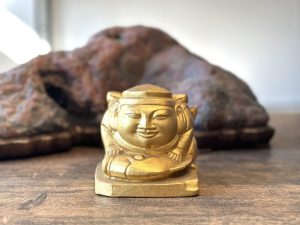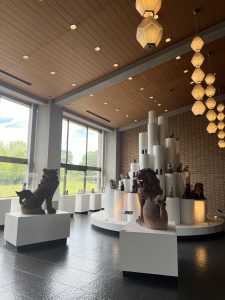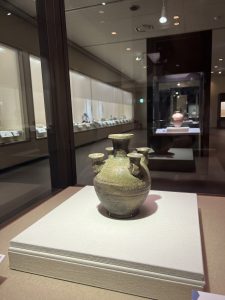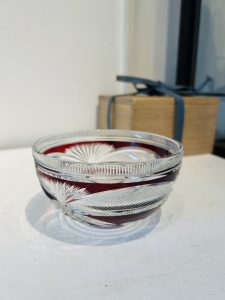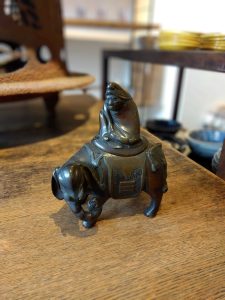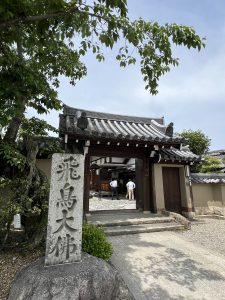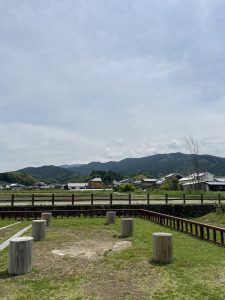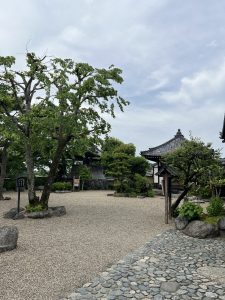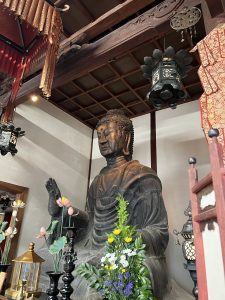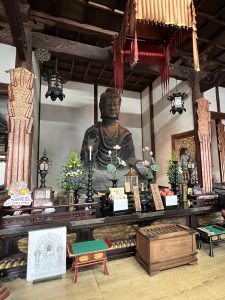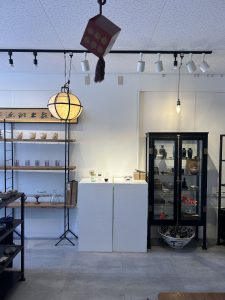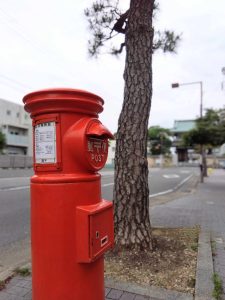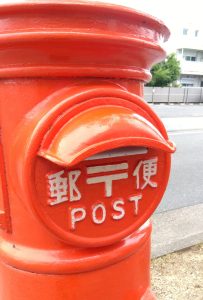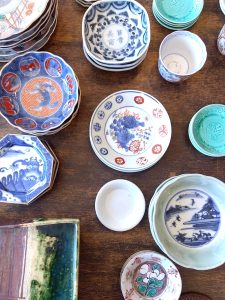紫陽花のおかげで梅雨もいいなと思わせてくれます(愛知県名古屋市千種区姫池通 骨董買取 古美術風光舎)
2025.06.06
名古屋は今日明日が梅雨入り前の貴重な晴れ間。お洗濯やお掃除、布団干しなど集中的に進めていきたいところですね。週明けにはいよいよ梅雨入りとなりそうです。
そういえばふと気が付くと、通りすぎるお宅の庭先などに、様々な色の紫陽花が咲き誇っています。すっかり辺りは6月の風景となっていますね。紫陽花を好きになったのはいつからなのか、この時期になると紫陽花が目に留まってしかたがありません。
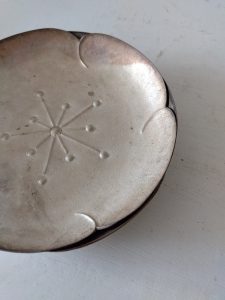
品種改良によりその種類が増えたこともあるとは思いますが、土や環境にもよるのでしょうか、同じ品種でも少しずつ違っていたりして、そのバラエティの多さに今年も目が離せません。
手入れの行き届いた紫陽花園の紫陽花も素敵なのですが、普通のお宅の軒先の風景に佇む姿が、一番似合うなと個人的には思っております。
普段は地味にお宅の脇などに静かに忘れたように植わっているのに、この時期になると急に軒先に立派なそして色とりどりの花を一斉に咲かせ、梅雨時期の薄暗いじめっとしたお宅の脇の空間を奥ゆかしくも美しく華やかに咲く姿が、おうちとセットでこれまた良い風景。
そんな紫陽花の咲いているその場面をさりげなく見せていただき、ひとり楽しむのですが、これは傍からから見ると完全に怪しい人ですので、あくまでもさらりと通り過ぎるようにはしております…。
先日もう一つ6月の風景が和菓子店に。そうです。「水無月」が並んでおりましたよ。
6月の和風月明は「水無月」とも言いますが、水無月の「無」は「ない」ではなく助詞の「の」にあたる言葉とされ、「水の月」という意味になります。これは、10月の和風月名「神無月」の「無」と同じ意味です。「神無月」も「神がいない月」ではなく、「神の月」という意味になります。
この水無月というお菓子、ご存知の方もおいででしょうが、三角形に切った白いういろうに、炊いた小豆をのせたいたってシンプルな和菓子。その乳白色がなんとも優しくそして清々しい、はたまたあんことの絶妙コンビなのです。
平安時代の宮中にて、西賀茂地区の氷室に保存していた氷を食べる「氷室の節会」という暑気払いの風習が行われ、そんな本格的な夏を前に涼をとる風雅な行事にちなんで、氷の形を模した水無月をいただいたことが始まりとされています。
現在では、神社の「夏越の祓」の時期に、邪気払い、無病息災、家内安全を願って、水無月をいただきます。
6月になると憂鬱とばかり思いがちですが、紫陽花といい水無月といい、こうして「6月のいいもの」を探してみると、鬱陶しいと思いがちなイメージは、それらの色、食感、風景よってスーッと流れていく気がします。
まだまだ「6月はいいな」と、私に思わせてくれるいいものが他にあるかもしれませんので、今月はもう少し探してみるといたしましょう。
ではでは、また。(スタッフT)
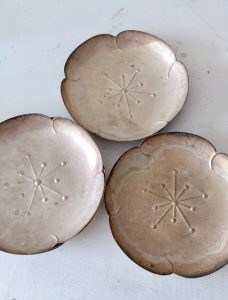
Today and tomorrow are precious sunny days in Nagoya before the rainy season begins. We should concentrate on washing, cleaning, and drying futons. It looks like the rainy season will finally begin by the end of the week.
Speaking of which, I suddenly noticed that many different colors of hydrangeas are in full bloom in the yards of houses I pass by. It is completely the scenery of June around here. I don’t know how long I have been in love with hydrangeas, but at this time of the year, I can’t help but notice them.
I think it is partly because the variety has increased due to breeding, but it may also depend on the soil and environment, with the same variety being slightly different.
Although hydrangeas in a well-maintained hydrangea garden are lovely, I personally think they look best when they stand in the eaves of an ordinary house.
Usually, they are planted quietly and unobtrusively on the sides of houses, but at this time of the year, they suddenly bloom all at once with magnificent and colorful flowers at the eaves of houses.
I casually show such a scene of hydrangea blooming and enjoy it by myself, but I try not to pass by it casually because I am a completely suspicious person when seen from the side….
The other day, another June scene appeared in a Japanese sweets store. That’s right. Mizunazuki” were on display.
The Japanese-style moonlight in June is also called “mizunashizuki,” but the “Mu” in mizunashizuki does not mean “no” but rather ‘no’ in the particle “no,” meaning “water moon. This is the same meaning as that of “Mu” in the Japanese month name of October, “kaminashigetsu. The word “kaminashizuki” does not mean “the month of no god,” but rather “the month of god.
As some of you may know, Mizunazuki is a very simple Japanese confectionery consisting of a white Uiro (a white sweet made from rice flour) cut into triangles and topped with cooked azuki (red beans). Its milky white color is gentle and refreshing, and the combination with red bean paste is exquisite.
In the Heian period (794-1185), the custom of eating ice stored in an icehouse in the Nishigamo district to ward off the heat was practiced in the imperial court.
Nowadays, mizunazuki is eaten at the time of “Natsukoshi-no-harae” at shrines to drive away evil spirits, to pray for good health, and for the safety of the family.
We tend to think of June as gloomy, but when I look for “good things in June” such as hydrangea and mizumazuki, I feel that the depressing images I tend to have about June are easily swept away by the colors, textures, and scenery of the month.
There may be more good things that make me think, “June is nice,” so I will try to look for more this month.
See you soon. (Staff T)
*****************
ご実家の整理やお片付けなどをされている方のご相談などが多くございます。
お片付けなどくれぐれもご無理のないようになさってくださいませ。
風光舎では古美術品や骨董品の他にも絵画や宝石、趣味のお品など様々なジャンルのものを買受しております。
お片付けをされていて、こういうものでもいいのかしらと迷われているものでも、どうぞお気軽にご相談下さいませ。
また風光舎は、出張買取も強化しております。ご近所はもちろん、愛知県内、岐阜県、三重県その他の県へも出張いたします。
まずは、お電話お待ちしております。
なお、毎月21日の持込鑑定会では無料鑑定・買取・持込など、ご予約なしで承っております。
ご近所の皆さま、ご遠方のみなさまも、お気軽にお越しくださいませ。
愛知県名古屋市千種区姫池通
骨董 買取【古美術 風光舎 名古屋店】
TEL052(734)8444
10:00-18:00 OPEN
#出張買取#骨董#古美術#骨董品#絵画#版画#茶道具#刀剣#彫刻

